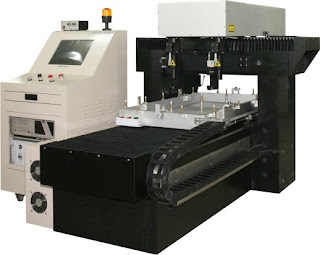Related Searches: glass C edge double sided edging machine glass T edge double sided edging machine glass washing machine horizontal glass washing machine solar glass Solar Glass supplier Dragonsolar nano coated glass Dragonsolar solar glass Antireflection coating glass Dragonsolar patterned glass
Experience the benefits of solar energy, wind power, and eco-friendly living. ... No machines are needed to take care of the plants or to harvest; just a small green oil extraction machine that can be hooked up to photovoltaic panels. A lot of the harvesting is manual labour which employs people, creating jobs. This means a much more environmentally friendly low carbon emission for production
Tuesday, September 7, 2010
glass_machine
Related Searches: glass C edge double sided edging machine glass T edge double sided edging machine glass washing machine horizontal glass washing machine solar glass Solar Glass supplier Dragonsolar nano coated glass Dragonsolar solar glass Antireflection coating glass Dragonsolar patterned glass
bab5_solar

The Third Degree Burner is based on the shell of our previous vehicle, the Afterburner II. The chassis, suspension, drive train, electrical systems, and telemetry have all been completely rebuilt to accomidate the new SunRayce rule requiring 4 wheels (the Afterburner II has 3 wheels). The only components remaining from the Afterburner II are the front fairings (aerodynamic wheel guards) and the top portion of the shell.
While much has been rebuilt, the design (with the exception of the 4th wheel) looks extremely similar to the Afterburner II's. The chassis is a carbon-honeycomb box structure. The suspension combines Risse Racing Technology shocks with custom-designed aluminum members. The aerodynamic shell is molded from kevlar and epoxy, in order to be light and rigid while providing a safe, energy-absorbent structure around the driver. The solar cells are made by ASE America and are 14.5 % efficient. They are split up into modules of 4x7 cells on average, each module being entirely sealed inside a rigid resin and glass matrix.
The electrical system combines New Generation Motor Corp's hub motor with GB Battery's Nickel-Metal-Hydride cells, along with the solar array and some accessories (turn signals, horn, telemetry, etc.). The entire combination is extremely efficient, enabling the car to drive 45 mi/hr on the power of a single hair dryer.
solar-panel
lawn-solar-power

purchased a 45W Solar Panel Kit from Harbor Freight a couple weeks ago (three 15W solar panels and a cheapie charge controller for $199), but had problems with the controller right off the bat. I messed around with it for a couple of days before deciding that it was junk and started checking around for a better one. On the advice of some friends and a silver-tongued tech rep at Xantrex, I purchased a Xantrex C40 solar controller on eBay for $112. This is about twice what I had wanted to pay and a bit of overkill for my immediate application, but since I have a couple more solar electric projects in mind and wanted to keep my options open, I opted for the C40 because it seemed to have plenty of power (40 amps) and be the ultimate in flexibility.
solarpowered-chair
 A group at Southern Taiwan University of Technology have created the world's first solar-powered wheelchair (which may or may not be true). Allegedly the thing runs entirely off solar energy and needs no plugging in. It was designed to be gentler on the environment and prevent people from being stuck out in the rain because their traditional electric battery ran out. So apparently it runs on rain too and not just sun. Because most of the time it's raining out there isn't much sun. What can I say, I'm a keen observer. But you know what there is a lot of when it rains? Worms. That's because when rain mixes with dirt it makes worms. It's a chemical reaction or something.
A group at Southern Taiwan University of Technology have created the world's first solar-powered wheelchair (which may or may not be true). Allegedly the thing runs entirely off solar energy and needs no plugging in. It was designed to be gentler on the environment and prevent people from being stuck out in the rain because their traditional electric battery ran out. So apparently it runs on rain too and not just sun. Because most of the time it's raining out there isn't much sun. What can I say, I'm a keen observer. But you know what there is a lot of when it rains? Worms. That's because when rain mixes with dirt it makes worms. It's a chemical reaction or something.
Sunday, September 5, 2010
About tanks, and why they're a necessity in modern ground forces
[...] however my confusion remains. What is/ where is the utility and value of the MBT?
Previously, when a tank had better armour the performance and mobility declined; in designing the Leopard 2 the Germans have reversed this trend, the end result being a superior vehicle.
Saturday, September 4, 2010
Friday, September 3, 2010
Infantry skill horror photo
As seen through a night-vision device, U.S. Army Sgt. Joseph P. Khamvongsa returns fire against an insurgent attack on Combat Outpost Badel, Afghanistan, Aug. 25. 2010. Khamvongsa, a forward observer, is assigned to Company B, 2nd Battalion, 327th Infantry Regiment. U.S. Army photo by Staff Sgt. Gary A. Witte
It's even a NCO, part of the NCO corps that's supposed to keep the individual and small unit skill level of the army high.
Let's hope that this soldier is a lone exception, along with the equally clueless photographer.



